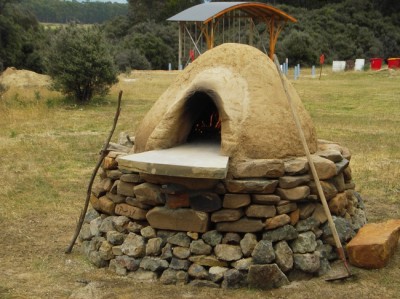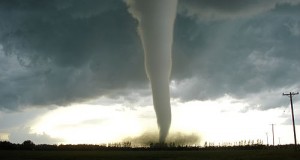
image credit sourdough.com
In the blistering heat of summer, the last place you or anyone else wants to be is in the kitchen cooking. Standing in front of a hot oven or stove top isn’t much fun in the best of circumstances, but in July or August it can make you feel as if you’ve just landed a starring role in a remake of “The Towering Inferno.”
But who says all of your warm-weather cooking has to be done indoors? Or for that matter, who says that any of your summertime cooking needs to be done in your kitchen? Outdoor cooking is in fact a very legitimate and cost-effective means of food preparation in any circumstance, and the great news is that you don’t have to be limited in that area to simply grilling or barbecuing. Don’t get us wrong; we appreciate a good burger grilled to charbroiled perfection just as much as you do. But grills only allow you to do so much, and if you tried to rely on them for every meal, your nutrition would suffer and you would get sick and tired of having to clean up all that messy used charcoal over and over again.
Outdoor ovens are beautiful because they can take you away from all that. Most frequently associated with the preparation of delicious breads and pizzas, but fully capable of producing as wide a variety of foods as any name-brand indoor unit, outdoor ovens are the perfect cooking remedy for excessive summertime heat. And their usefulness is not limited to the hottest months; they can be just as awesome to fire up and put into use on cool fall or spring days, when you’d love to be outside even though the temperatures are a bit too nippy for comfort.
A fully fired outdoor oven can get quite hot, which in addition to boosting its warm-ability factor also makes it uniquely functional as a high-quality cooking unit. And that is what really makes an outdoor oven special – it will prepare your foods so thoroughly, purely, and exquisitely that when you eagerly scarf them down it will seem as if you are consuming familiar dishes for the very first time. Anyone with a few extra sawhorses and some outside space to spare can and should install their own outdoor oven, which is extremely unique among high-performance appliances because of how cheap and easy it is to construct.
Here’s a promise we can make: if you do indeed decide to construct your own outdoor oven using one of the many terrific DIY plans now widely available on the internet or in various books, the unit you build will deliver more bang for that proverbial buck than you’d ever dreamed was possible. The only caveat is that you must select the appropriate building materials if you expect to reap the full rewards of having your own outdoor oven – which is just another way of saying that you should construct the core of your outdoor oven from cob, the cheapest and most convenient building material available anywhere on – or in this case, in – the face of the earth.
Building An Outdoor Cob Oven: The Cliffs Notes Version
Should you decide to build your own outdoor cob oven, it will likely turn out to be one of the easiest do-it-yourself projects you have ever undertaken. You should most definitely seek advice and guidance from the many books and websites that show you exactly how to construct such an appliance, but the basic idea is so simple that it will be all but impossible for you to fail in your efforts.
For those who don’t know, cob is an earth-based construction material made from a mix of soil high in clay content and a substance known as sharp sand, with the latter predominating at a ratio of approximately 3:1. Once you dig down below the topsoil you should have no trouble finding dirt that is rich in clay, and while coarse-grained sharp sand (also known as builder’s sand) might have to be purchased, it is a relatively inexpensive ($30-$35 per cubic yard) product. To make cob, water will be slowly added to the clay-sand combination, which will then be rolled or mixed repeatedly by hand or with the feet until it has a texture similar to bread dough. When properly prepared, cob can be molded and shaped as if it were modeling clay, and once it dries and hardens it will create a structural form as strong and resistant to damage as anything made from poured concrete.
The Most Versatile Backup Stove In The World Allows You To Cook Anything, Any Time, Any Where
If you do decide to build your own outdoor cob oven, here is a simplified step-by-step description of what you will need to do (and this of course is just one possible version; other design choices are possible):
- Construct a foundation – it can be circular or square, just as long as it is somewhat wider than the planned size of your oven compartment. Rocks, concrete blocks, urbanite, and metal barrels are all good scavenged materials that can be used for this part of the project, and when you are finished your foundation should be built up to at least 3 feet off the ground.
- Add an insulating layer of cob on top of the foundation (optional) – this layer should be about 2 to 3 inches thick, with an upturned rim molded around its perimeter. If the top of your foundation is relatively smooth and flat, you can skip the insulating layer if you would prefer, but having a rim around the top of the foundation is good because it will help hold the sand that you must use to complete step 3.
- Create the oven floor – firebrick is the required material here. First you will need to lay down a layer of soft sand, about 4-6 inches thick, and you will then place your bricks on top of the sand one by one, fitting them tightly together and tamping them down with a hammer to make sure your floor is level. You can certainly use recycled or old bricks to make your oven floor, but they should be clean and free of mortar. For ease of use, you will want your oven floor to be at about waist level or perhaps a few inches above, so in order to get it to the right height you may need to make some adjustments in the amount of sand you use under your bricks and/or in the height of your foundation.
- Make a sand form to act as a template for the oven – on top of the firebrick floor you will pile a prodigious amount of soft sand that can be shaped into the form of a dome. This form should be a few inches taller at its peak than half the planned size of the oven (so for an oven with a planned diameter of 27”, for example, your sand dome should be 16”-19” high). After you have carefully shaped and molded your dome into a nice even spherical form you will then need to cover it with newspaper, sheets flush against the sand, in order to prevent the cob layer that you are about to apply from sticking.
- Build the actual oven department – this is the most important step; you will need enough cob to cover the entire outer surface of the sand form to a thickness of 3”-4”, and it is a good idea to experiment with your cob-making technique ahead of time so you will be able to mix what you need on demand. After initial application you will want to pack and pat and roll the cob in tight against the surface of the form with a piece of flat board, and if your cob sticks to the board at all you should give it extra time to dry before proceeding any further. If you are planning to use your oven for anything more than baking pizza – which presumably you will be – you should add a second layer of cob, about 2 to 3 inches thick, on top of the first one after it is good and dry.
- Mark the outside of the cob dome for a doorway – the wooden door of an outdoor cob oven should be 63 percent of the height of the sand form and about 40 percent of the diameter of the oven’s interior. You can trace an outline for the door in the cob surface at any time, although you will not actually cut the door into place until you are sure that the cob has completely dried. Once the cob shell of the oven dome gets so dry and hard that it can pass the “finger-poking” test (no denting) it will be time to continue, but depending on how moist your cob mix is this could take a few days or perhaps as long as a couple of weeks.
- Cut the door and remove the sand – when you know your cob oven is rock-solid dry and strong enough to stand on its own, you can cut your door and scoop all the sand out through the opening you create, leaving behind an oven compartment that is just about ready for use. You will want to use a smooth piece of wood or stone to fine-tune the inside of the doorway, so the wooden door will fit properly into place (you will also need to install some type of hinge system, of course), and the outside of the oven can be polished with a piece of milled lumber or a metal trowel.
- Build a shelter to protect the oven – it is important to prevent an outdoor cob oven from getting wet, so you should build some kind of roof or shelter over the top of it to protect it from the rain. Naturally this shelter will not be enclosed, since you want the heat emanating from your stove to dissipate quickly into the atmosphere.
And that, in a nutshell, is it folks. By following just these few simple steps, none of which require the use of exotic, expensive, or difficult-to-find materials or tools, you will be able to construct your very own wood-burning outdoor oven, thereby giving yourself the ability to prepare dozens of delicious dishes for your family without having to worry about heating up your home or consuming precious electrical resources.
Principles Of Operation
An outdoor oven with a 24-to-27-inch interior diameter would be standard, and would leave enough room to cook a large pizza or multiple loaves of bread at the same time. With a normal-sized cob oven, just leaving the door open is usually sufficient to ensure that proper air exchange occurs and that all the smoke can escape during the firing stage, but with a larger unit, it may be necessary to add a small chimney to facilitate good air circulation and efficient burning.
Firing the oven is a simple affair – simply fill the cob compartment with dried kindling and wood and light it and let it burn for 2 to 3 hours, adding extra wood as necessary. Once temperatures reach the magic 650-750 degree range, you should sweep out the coals and any fire that remains and close the door for a few minutes so that the heat you have produced can be more equally distributed. Conventional oven thermometers will not normally register anything above 500 degrees, so you will have to estimate when internal temperatures have reached their peak by looking to see if all the black soot has been burned off the inside oven walls – and if it has, you should get your pizza in there ASAP.
New “Sun Magic” Solar Oven Is So Fast It’s Been Dubbed “Mother Nature’s Microwave”
We say ‘pizza’ first because this is the type of food most commonly prepared at the super-high temperatures you will achieve at the end of your firing cycle. To get started, just slide your pizza into the oven, close the door, and start checking regularly after about a minute-and-a-half to see when everything looks good to go. Three or four minutes max should be the required baking time for a high-temperature crispy-crust pizza cooked in an outdoor cob oven, and when you pull it out, slice it up, and distribute it, everyone who devours a piece will be convinced that they have just eaten something that was prepared by the finest pizza joint in town – which, in a very real sense, it was.
As the stove gradually cools, it will likely maintain temperatures in the cooking range for anywhere from 6 to12 hours, depending on cob wall thickness. That means that as the oven gradually cools you can broil, bake, steam, roast, braise, or slow bake a whole series of foods in succession based on their declining temperature requirements (you can use a regular oven thermometer if needed to keep track of internal oven temperatures as they fall). Even when an outdoor cob oven has reached the end of its cooking cycle, it will stay warm for several more hours, allowing you to use it to dry fruit, or herbs, or the next batch of wood you plan to use when you fire the unit up again.
In addition to pizza, outdoor wood-fired ovens are especially famous for producing the most delicious warm fresh bread you could ever hope to find, crisp and crusty on the outside and delightfully chewy and tasty on the inside. Bread will bake successfully when the oven is in the 350-400 degree range, and what makes it all work out so well is the way that an outdoor oven is able to bombard bread loaves with heat from every direction at the same time – from below, above, the side, and also conductively from the super-heated steam created by the moisture that evaporates from out of the bread dough as it cooks. Thanks to this comprehensive process, there is simply no matching the high-quality flavor of bread prepared in an outdoor cob oven, and if word gets out that you have been making it this way, get ready for plenty of unannounced visits from friends, neighbors, relatives, and pushy strangers.
Because an outdoor cob oven produces such intense heat, it may be necessary to occasionally bake things on top of an overturned baking pan that has been set on the oven floor, in order to prevent your food from getting burned on the bottom. You might have to learn from experience here, but after a few misadventures you should have a pretty good idea of when you might need to take this extra precaution. The other problem with the intense heat is that it can easily char wooden doors, but you can prevent this by attaching foil or metal to the back of your door or by always making sure to soak it in water before closing it up during the cooking cycle.
Cob Will Do The Job
An outdoor cob oven makes a wonderful addition to any homestead. The materials you use will be unlikely to cost you much more than maybe $25-$75 in total (excluding the cost of the roof/shelter), and the food you prepare will be so delicious that your family may beg you to cook dinner outside even in the middle of winter when wind chills drop well below zero.
We don’t necessarily recommend taking things that far, but there is no doubt that during these sizzling summer months an outdoor cob oven would be a real blessing that everyone in your home would come to enjoy and appreciate. And it would no doubt seem like a gift from heaven to those who were formerly spending 2 to 3 hours each day standing in front of a conventional stove in a hotbox kitchen frying, baking, roasting, broiling, and boiling a whole succession of piping hot dishes, all the while sweating like a marathon runner scurrying across the Death Valley at high noon on the hottest day of the year.
 Off The Grid News Better Ideas For Off The Grid Living
Off The Grid News Better Ideas For Off The Grid Living




